Jellyfish Lake (Palauan: Ongeim’l Tketau, lit. ’Fifth Lake’) is a marine lake located on Eil Malk Island in Palau. Eil Malk is part of the Rock Islands, a group of small, rocky, mostly uninhabited islands in Palau’s Southern Lagoon, between Koror and Peleliu. There are about 70 other marine lakes located throughout the Rock Islands. Millions of golden jellyfish migrate horizontally across the lake daily.
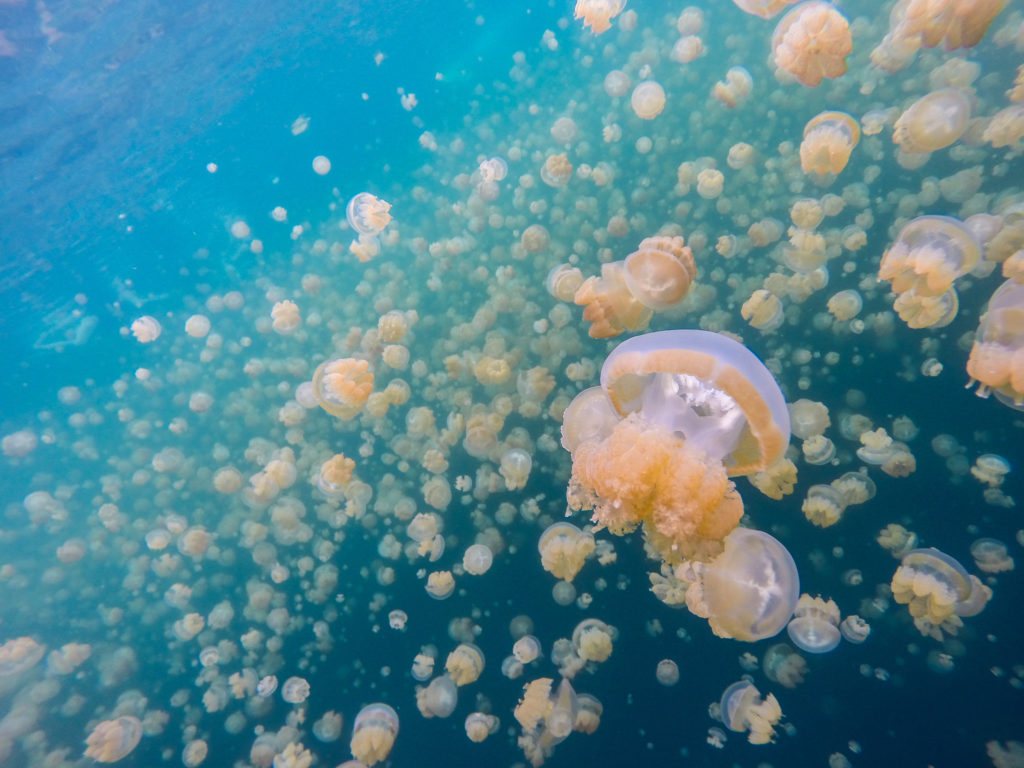
Jellyfish Lake is connected to the ocean through fissures and tunnels in the limestone of an ancient Miocene reef. However, the lake is sufficiently isolated and the conditions are different enough that the diversity of species in the lake is greatly reduced from the nearby lagoon. The golden jellyfish, Mastigias papua etpisoni, and possibly other species in the lake, have evolved to be substantially different from their close relatives living in the nearby lagoons.
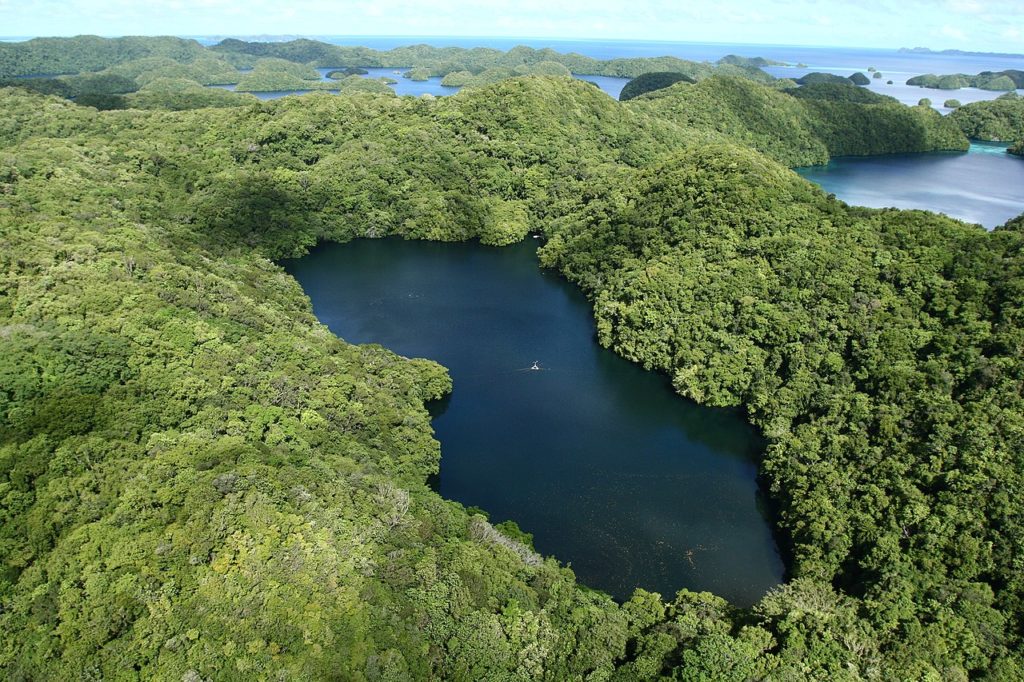
There are more than 50 marine lakes throughout Palau, but Jellyfish Lake is the only one people can visit. Just 20,000 years ago, the area used to be a dry depression, but when sea levels began to rise, jellyfish got trapped in the area and created the phenomenon, according to marine researcher Gerta Ucharm.
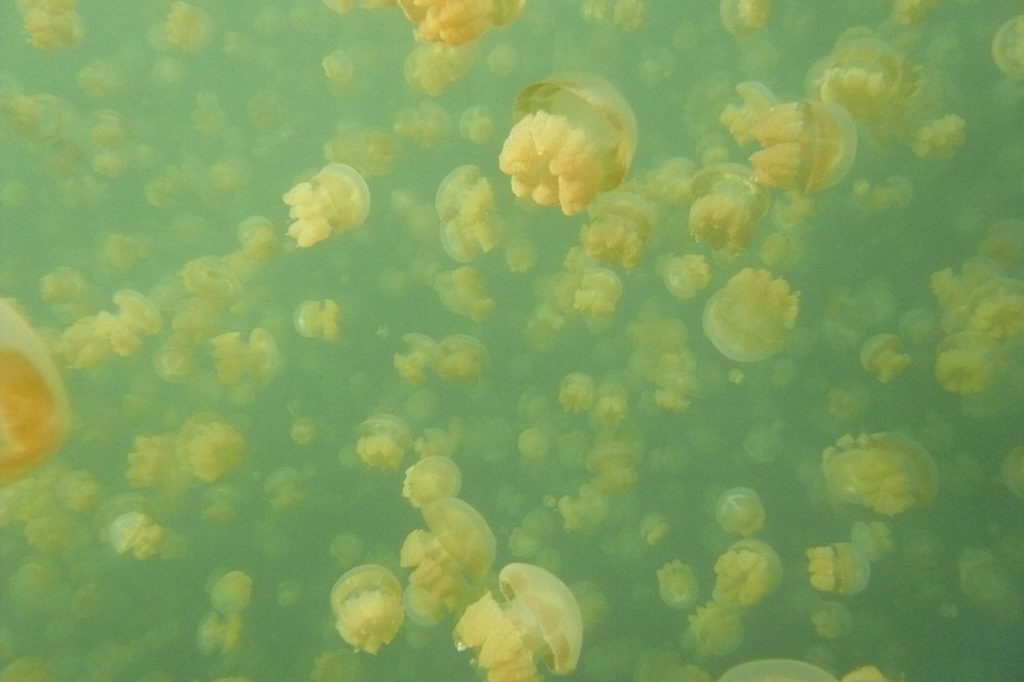
Surrounded by mangrove trees, millions of the world’s rarest jellyfish can be found in the lake. While some jellyfish, like the box jellyfish, can kill a person within minutes, the inhabitants of Jellyfish Lake are benign. If felt, their sting would cause no more than mild discomfort.
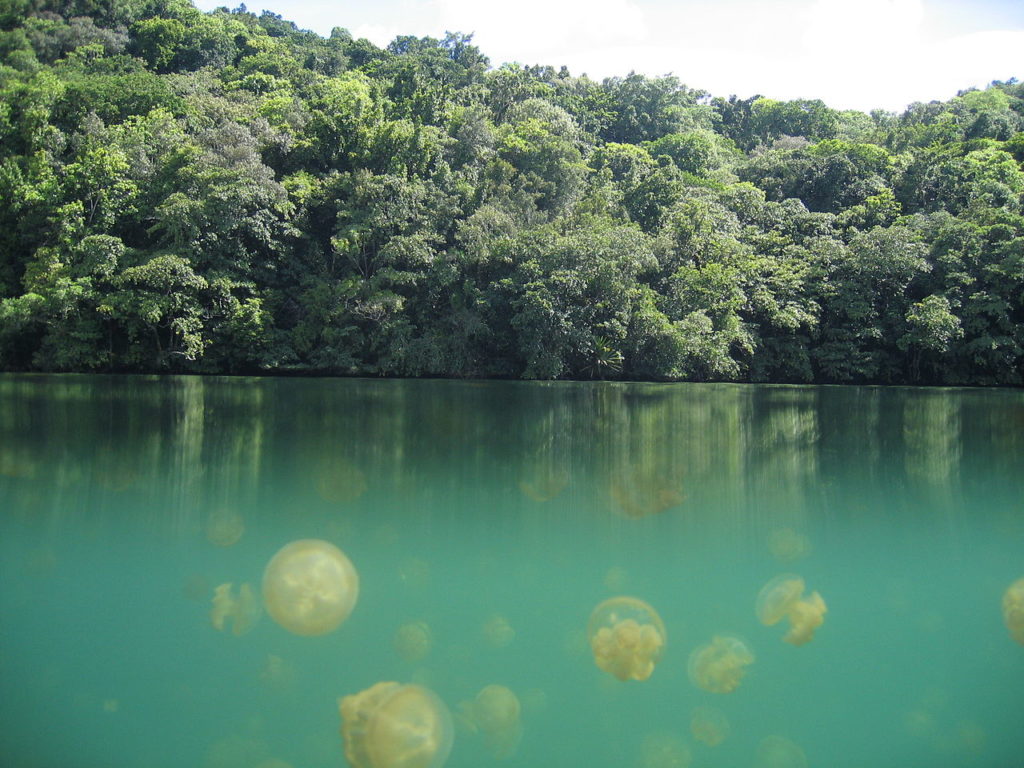
In 2000, scientists estimated there were more than 30 million jellies in the lake. But in 2016 something happened that caused the jellyfish to die — eventually causing the famous lake to be still. The jellies have since rebounded, and the lake now averages about 5-7 million jellyfish.
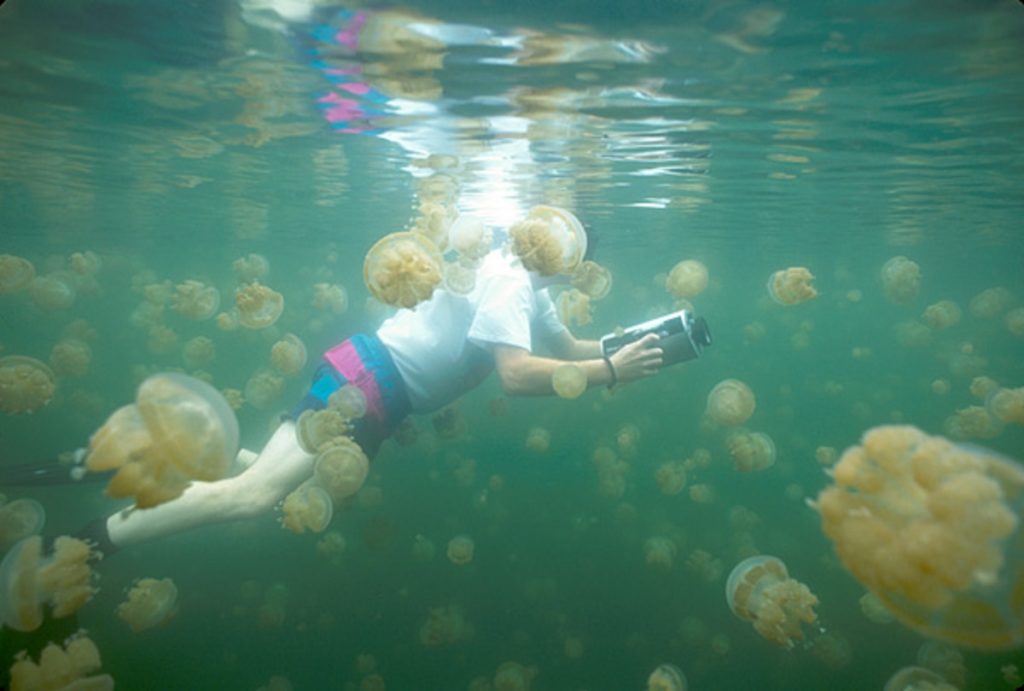
While snorkeling is allowed, scuba diving is not. Jellyfish Lake is stratified into two layers, an oxygenated upper layer (mixolimnion) and a lower anoxic layer (monimolimnion). About 45 feet below the surface, the lake turns into a layer of pink bacteria, and below that is a poisonous layer of dissolved hydrogen sulfide gas.
According to the Wikipedia














